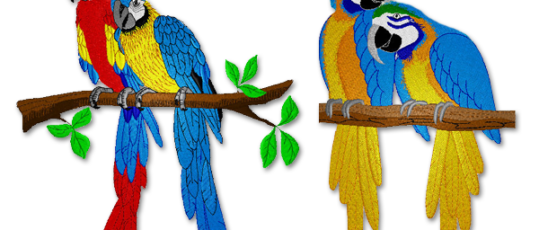Trustworthy Digitizing for Embroidery: Relied On by Experts
Simplifying the Art of Embroidery Digitizing: Step-by-Step Overview
As modern technology proceeds to development, the digitization process has actually become extra easily accessible, allowing lovers to bring their elaborate layouts to life with ease. In this overview, we will unwind the complexities of needlework digitizing, breaking down each step methodically to enhance the process and encourage both novices and seasoned embroiderers alike.
Comprehending Embroidery Digitizing Software Program
Embroidery digitizing software program works as an essential device for transforming detailed styles right into digital layouts compatible with needlework devices, facilitating specific sewing and customization. This customized software application allows users to import various photo data styles, such as JPG or PNG, and transform them right into needlework machine-readable formats like DST, EXP, or PES - Digitizing for Embroidery. By making use of attributes like stitch modifying, rug choices, and thread shade choice, digitizing software application makes it possible for users to manage every facet of the layout process
Furthermore, progressed embroidery digitizing software supplies devices for producing complex styles, changing stitch density, and including elaborate details. Customers can likewise sneak peek the style prior to stitching it out, making certain accuracy and reducing mistakes. Additionally, several software program programs provide automated features that assist improve the digitizing process, conserving time and initiative.
Comprehending the capabilities of needlework digitizing software application is essential for achieving top quality outcomes in needlework tasks. By grasping this device, embroidery fanatics and specialists can unleash their creative thinking and bring detailed styles to life with precision and efficiency.

Selecting the Right Layout Data
After acquainting yourself with the abilities of needlework digitizing software program, the following vital step in the procedure is choosing the ideal design declare your job. Digitizing for Embroidery. When selecting a design declare embroidery digitizing, it's important to take into consideration the complexity of the layout, the dimension of the end product, and the kind of material you will be dealing with
For detailed layouts with great information, a high-resolution picture or vector file is suggested to guarantee that the needlework equipment can precisely recreate the layout. Additionally, the dimension of the end product plays a considerable role in picking the appropriate layout file. Larger layouts may call for greater resolution data to preserve clearness and sharpness.
Moreover, the sort of fabric you will be embroidering on influences the choice of design documents. Different fabrics might call for changes in the layout documents to make certain that the stitches are correctly lined up and the layout looks like meant. By thoroughly selecting the appropriate style file based on these factors, you can set yourself up for a successful embroidery digitizing procedure.
Digitizing Tools and Methods
Utilizing specialized software and precision methods, digitizing tools are necessary in transforming detailed designs right into embroidery-ready documents. Embroidery digitizing software program, such as Wilcom, Hatch, or Embrilliance, supplies the essential platform to transform artwork right into stitch information. These programs offer attributes like stitch editing and enhancing, underlay options, and lettering tools to guarantee the layout converts effortlessly onto fabric.
One of the essential techniques in digitizing is producing a clear path for the needlework device to follow. This includes digitizing each component of the layout with precision, establishing stitch visit the website types, thickness, and instructions. By utilizing tools like digitizing tablets or software-specific plugins, embroiderers can achieve a high level of accuracy in their digitized styles.
Moreover, grasping the art of rug sewing is crucial for producing high quality embroidery. Underlay stitching maintains the textile and produces a foundation for the design, ensuring that the end product is both visually appealing and long-lasting. By recognizing these digitizing devices and methods, embroiderers can elevate their craft and bring intricate layouts to life with accuracy and effectiveness.
Customizing Stitch Kinds and Instructions
Having actually established a foundation in digitizing tools and strategies, a crucial aspect in progressing needlework craftsmanship lies in customizing stitch types and directions with accuracy and purpose. The selection of stitch types can substantially influence the general appearance and structure of the embroidered design. Satin stitches, known for their smooth and glossy finish, job well for developing borders and text. On the other hand, fill stitches are optimal for covering larger locations successfully. By purposefully integrating these stitch types, embroiderers can accomplish deepness and dimension in their styles.
Moreover, the instructions of stitches plays a crucial function in improving the aesthetic allure of the last embroidery. By exploring with different find this stitch angles and patterns, embroiderers can bring their styles to life with amazing detail and complexity.
Testing and Refining Your Digitized Style
To guarantee the accuracy and quality of your digitized design, extensive testing and refinement are important action in the embroidery digitizing process. As soon as you have completed the digitization of your design, it is essential to test it before waging the real needlework. Evaluating allows you to identify any kind of possible problems such as thread breaks, stitch thickness issues, or style distortions that may affect the final outcome.

After testing, it is essential to fine-tune your digitized style based upon the comments from the examination sew-out. This might entail tweaking stitch settings, adjusting thickness, or making changes to the overall layout to accomplish the desired end result. By iterating with screening and refinement, you can adjust your digitized style to perfection prior to relocating forward with the real needlework process.
Verdict
Finally, grasping the art of needlework digitizing needs a detailed understanding of the software program, picking the best design documents, utilizing digitizing devices and methods, personalizing stitch kinds and directions, and testing and improving the digitized style. By following these actions, embroiderers can simplify the digitizing procedure and create premium embroidered layouts with precision and efficiency.